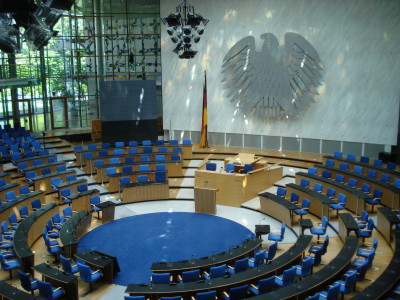A world map that clearly shows that democracy is only recent in most countries

For those born and living in a democracy, authoritarianism may seem like a long time ago, says Bastian Elle, a political and economics scholar at the University of Heidelberg. 'In many cases democracy is younger than authoritarianism,' he explains the history of the political system.
In most countries, democracy is a recent achievement. Dictatorship is far from a distant memory --Our World in Data
https://ourworldindata.org/democracies-age
The'Regimes of the World' data: how do researchers identify which countries are democracies? --Our World in Data
https://ourworldindata.org/regimes-of-the-world-data
According to Elle, there are many challenges involved in determining which country is democracy. There are many opinions about the definition of democracy and how the actual political system fits into that definition, and Elley points out that every assessment is somewhat subjective.
With this in mind, Elle used the large-scale survey ' V-Dem ', which is answered by thousands of experts each year, and the ' (PDF file) RoW classification method ' designed based on V-Dem. , In it, we pick up and explain two categories, ' election democracy ' and ' liberal democracy, ' which are defined as democracy. Election democracy is defined in the RoW taxonomy as 'citizens have the right to participate in meaningful, free, fair, multi-party elections', and liberal democracy is an element of electoral democracy. It is defined as 'citizens have the rights of individuals and minorities, are equal under the law, and administrative actions are constrained by legislatures and courts.'
Also, the RoW taxonomy defines ' closed authoritarianism ' as 'citizens do not have the right to choose between the government's chief executive officer or the legislature through multi-party elections.' And 'Citizens have the right to choose the Supreme Government and the legislature through multi-party elections, but make the elections meaningful, free and fair, such as freedom of association and freedom of expression. There is also a division of ' election authoritarianism ' defined as 'lacking freedom to do', but these are not defined as democracy.
Below is a color-coded world map based on the RoW taxonomy. Red indicates closed authoritarianism, orange indicates electoral authoritarianism, light blue indicates electoral democracy, and blue indicates liberal democracy. You can also change the reference year by moving the slider at the bottom. Japan, the United States, the United Kingdom, etc. are classified as liberal democracy, and China, Somalia, Saudi Arabia, etc. are classified as closed authoritarianism.
Below is a world map, color-coded based on the RoW classification, showing from what era election democracy has continued. Data from 1789 to 2020 are shown, and each color shows 'how many years of electoral democracy has continued'. For example, the United States and the United Kingdom fall under the category of electoral democracy for 1991 to 172 years in 2020.
Below is a graph showing how long the electoral democracy has continued. As of 2020, we can see that only 10 countries have continued for more than 91 years, and only 13 countries have continued for 61-90 years. This shows that in most countries democracy is less than a generation old, and many countries and many people have experienced authoritarianism, especially the elderly. Most of them have not experienced democracy. '
In addition, the world map displayed focusing on liberal democracy is as follows. As of 2020, only a very limited number of countries, such as the United Kingdom, Switzerland and Australia, have been liberal democracy for more than 91 years.
The graph below shows this, and it can be seen that as of 2020, there are only 32 countries that are classified as liberal democracy.
The RoW classification method considers freedom of expression and association in addition to freedom of election, but there is also a ' BMR classification method ' that focuses only on freedom of election. Below is a color-coded map of the electoral democracies in 2020. The results are generally similar to the RoW classification, but there are slight differences, such as India, which is classified as electoral authoritarian after 2019, is classified as electoral democracy.
Below is a graph showing the number of electoral democracies based on the BMR classification. The RoW classification classified as democracy in 92 of the 179 countries covered, while the BMR classification classified it as democracy in 118 of the 193 countries covered. It is a country.
The RoW classification method focuses on elections and freedom of expression and association, and does not consider other social systems such as egalitarianism that distributes social and economic resources evenly. In addition, Mr. Elley clearly states that subtle differences in the political systems of each country are not taken into consideration in order to divide into any of the four.
With this in mind, Elle says, 'Despite these shortcomings, it tells us a lot about how widely democratic political interests are held. The political rights of electoral democracy and liberal democracy. Is relatively recently established in any country. Even if you feel that youth was born into a democracy, that feeling can be a minority. Even if authoritarianism feels like a long time ago, Older people may still remember that. '
Related Posts:
in Posted by log1p_kr







